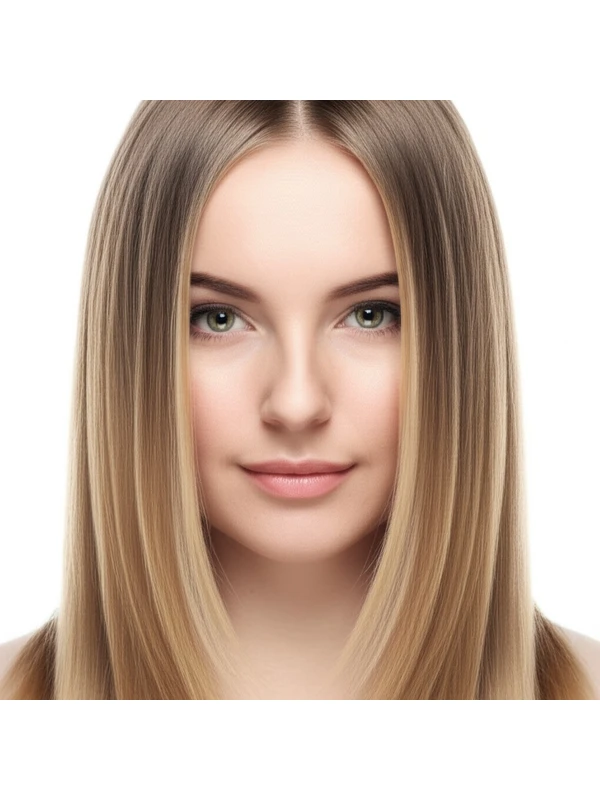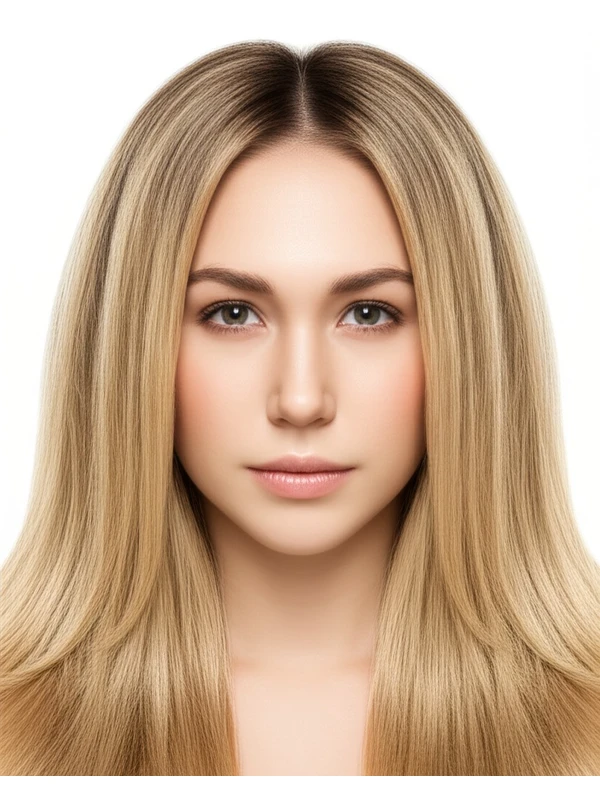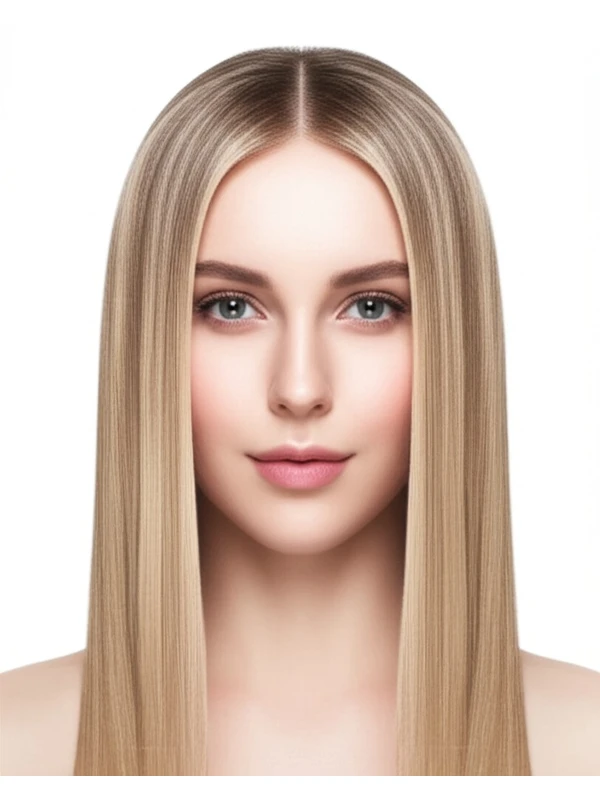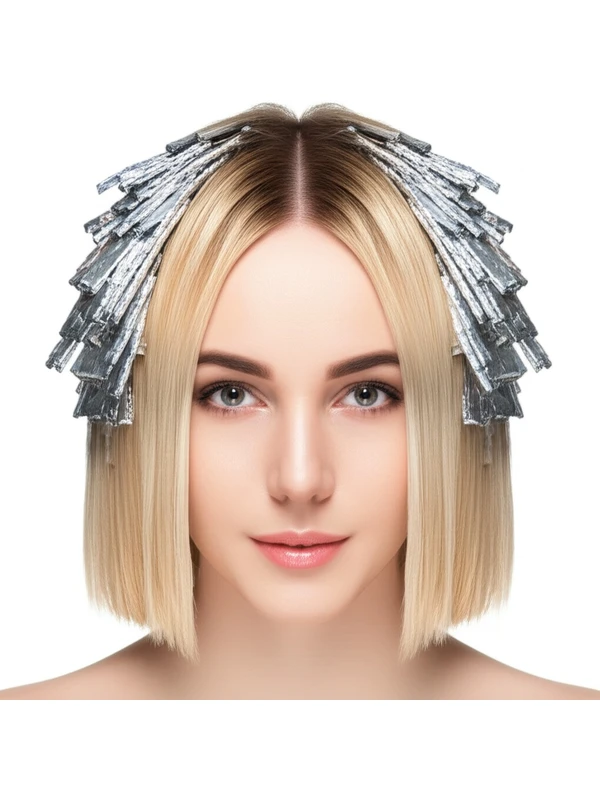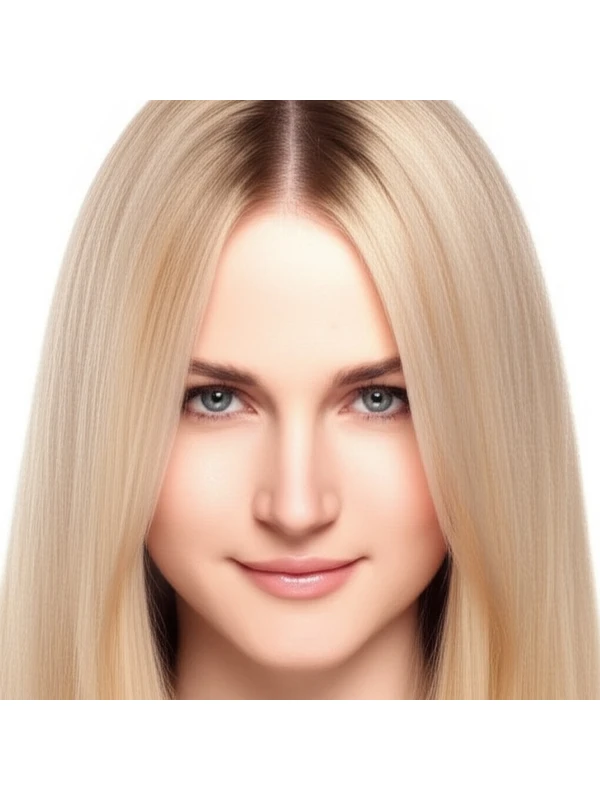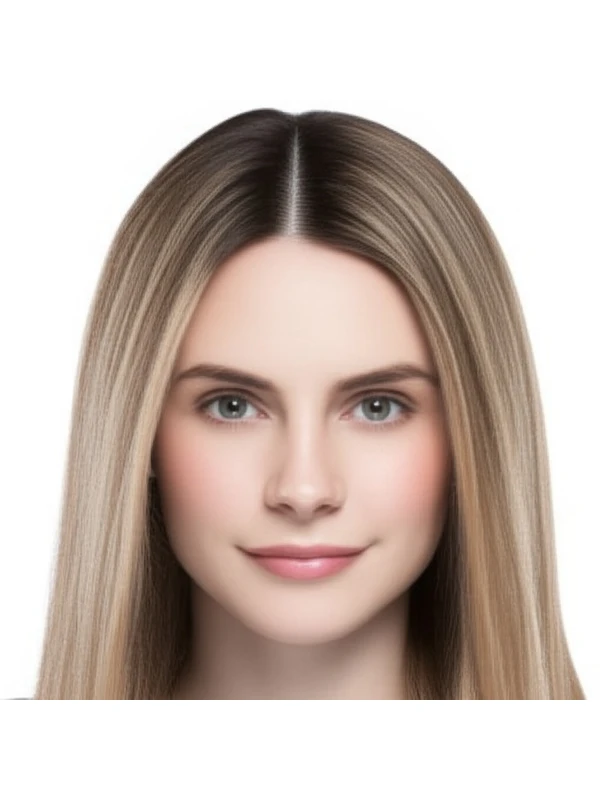#A Closer Look at AirTouch Highlights: Effortless Dimension for Every Hair Type
Airtouch highlights are a popular hair coloring technique that creates soft, natural-looking dimension. It's all about mimicking the sun-kissed effect you get from spending time outdoors. Let’s dive into everything you need to know!
#1. What is AirTouch and How Does it Work?
Airtouch highlights involve weaving sections of hair through your fingers (like catching air, hence the name) instead of using traditional foil. The stylist pulls a section of hair taut, then uses their thumb and index finger to "catch" strands and gently lift them away from the head. Lightener is applied directly to these lifted pieces.
Tools & Materials:
- Lightener (developer strength chosen by your stylist)
- Applicator brush or bowl
- Towel for cleanup
- Comb/Brush
- Gloves
Placement:
The placement of the highlights depends on the desired look, but generally focuses around the face and crown to create a brightening effect. Strategic sections are lifted to ensure even distribution.
Timing:
Processing time varies depending on your hair's natural color, density, and the lightness level you’re aiming for. Your stylist will monitor closely. Rinsing follows with a deep conditioner to close the cuticle and seal in moisture.
#2. What Goals Does AirTouch Achieve?
Airtouch is versatile! It can achieve several looks:
- Natural Dimension: Creates subtle, sun-kissed highlights that blend seamlessly.
- Root Blur: The soft application allows for a gradual transition from dark roots to lighter ends – great for low maintenance.
- Face Framing: Highlights around the face brighten and accentuate features.
- Soft Brightening: Adds lightness without harsh lines or blocks of color.
- Subtle Contrast: Provides gentle contrast throughout your hair, adding movement and visual interest.
#3. Who is AirTouch Best For?
Airtouch isn't a one-size-fits-all technique; here’s who typically looks amazing with it:
- Natural Color Level: Works well on levels 2–7 (light brown to medium blonde). The lighter your starting color, the more subtle the result.
- Undertones: Generally flattering for most undertones because of its soft, blended nature. Cool skin tones might benefit from cooler-toned highlights; warm skin tones can rock warmer shades. Discuss with your stylist!
- Hair Type/Texture:
- Straight Hair: Creates a beautiful, diffused highlight effect.
- Wavy Hair: Enhances natural waves and adds dimension.
- Curly Hair: Provides lift and brightness without disrupting curl patterns (when done correctly).
- Coily Hair: Can be used to add subtle highlights while preserving moisture and definition – a skilled stylist is key!
- Hair Density: Suitable for both fine and thick hair. On finer hair, it creates more noticeable dimension; on thicker hair, it adds lightness without feeling sparse.
- Hair Length: Works well on all lengths, from bobs to long layers.
- Lifestyle: Ideal for those seeking a low-maintenance look that grows out gracefully and requires fewer salon visits.
#4. AirTouch vs. Similar Techniques
Let’s break down how Airtouch stacks up against other popular coloring methods:
- Balayage: Both create blended highlights, but balayage is hand-painted directly onto the hair using a sweeping motion. Airtouch uses weaving and lifting for more diffused placement.
- Foilyage: A combination of foiling (traditional highlighting) and balayage techniques. It’s typically used to achieve brighter results than either technique alone, whereas AirTouch aims for a softer look.
- Traditional Highlights: Uses foil to isolate strands and lift them evenly. Airtouch provides a more natural, blended result with less contrast at the roots.
- Root Smudge/Shadow Root: These techniques focus on softening the line between the root color and highlighted lengths. AirTouch naturally incorporates this blurred effect due to its application method – it’s often used in conjunction with a root smudge for added seamlessness.
#5. Maintenance & Longevity
Keeping your Airtouch highlights looking their best requires some attention:
- Salon Timing: Typically, touch-ups are needed every 4–6 months, depending on how quickly your roots grow and the desired level of brightness.
- Toner/Gloss Refresh: A toner or gloss can be applied between highlight appointments to maintain color vibrancy and neutralize any unwanted tones (like brassiness). This is often done as a quick in-salon service.
- Grow-Out Behavior: Airtouch highlights grow out softly, with minimal harsh lines of demarcation. The blended nature means you’ll see more subtle changes over time.
- Budget/Time Planning: Expect to spend $150–$400+ per session (depending on location and stylist experience). Toner/gloss refresh appointments are usually around $50-$100.
#6. At-Home Care Tips
Proper care extends the life of your highlights:
- Wash Cadence: Wash hair less frequently – 2–3 times a week is ideal to prevent color fading.
- Heat Protection: Always use a heat protectant spray before applying any heat styling tools (blow dryers, straighteners, curling irons).
- Color-Safe Products: Use shampoos and conditioners specifically formulated for colored hair. These are gentler and help preserve vibrancy. Purple shampoo can neutralize brassy tones but should be used sparingly to avoid dullness.
- Deep Conditioning: Regular deep conditioning treatments (once a week) will keep your hair hydrated and prevent breakage, especially important with highlighted hair.
#7. Pros & Cons
Pros:
- Soft, natural-looking highlights
- Low maintenance grow-out
- Versatile – works on various hair types and lengths
- Creates dimension without harsh lines
- Can enhance facial features
Cons:
- Requires a skilled stylist for optimal results.
- May not be suitable for achieving very dramatic color changes.
- Can take longer than traditional highlighting techniques (depending on the desired result).
#8. Salon Consultation Script Prompts
Before your appointment, consider these questions to discuss with your stylist:
- What is my natural hair color level?
- What are my undertones (warm, cool, neutral)?
- What look am I trying to achieve (subtle dimension, face-framing, brightening)?
- How much time and money can I realistically commit to maintenance?
- Are there any areas of my hair that need extra attention or consideration based on texture/density?
#9. FAQs About AirTouch Highlights
- Is Airtouch highlights damaging? Like all lightening processes, it involves some degree of lift and potential dryness. However, the gentler application can minimize damage compared to traditional foiling when done correctly by a skilled stylist who uses appropriate developer strengths.
- Can I get AirTouch if my hair is already highlighted? Yes! Airtouch can be used to refresh existing highlights or add more dimension. Your stylist will assess your current color and adjust the technique accordingly.
- How long does an Airtouch appointment take? Typically, allow for 2–4 hours, depending on your hair length, density, and desired result.
- Can I do AirTouch at home? While DIY highlighting kits exist, achieving the soft, diffused effect of Airtouch requires significant skill and experience. It’s best left to professionals.
- Will AirTouch cover gray hairs? Airtouch can blend away some gray hairs, but it's not a primary solution for full grey coverage. A stylist will assess your grey density and discuss appropriate options.
- What if I don’t want my roots showing? While the root blur is part of the appeal, you can request more subtle blending or even a slight root smudge to minimize visible regrowth during the grow-out phase.
- Is Airtouch suitable for all hair colors? It's most effective on lighter to medium brown hair (levels 2–7). Darker hair may require multiple sessions and careful consideration of developer strength.
- How can I tell if my stylist is experienced with AirTouch? Ask about their training, view before-and-after photos of their Airtouch work, and don’t hesitate to ask questions about the process!
